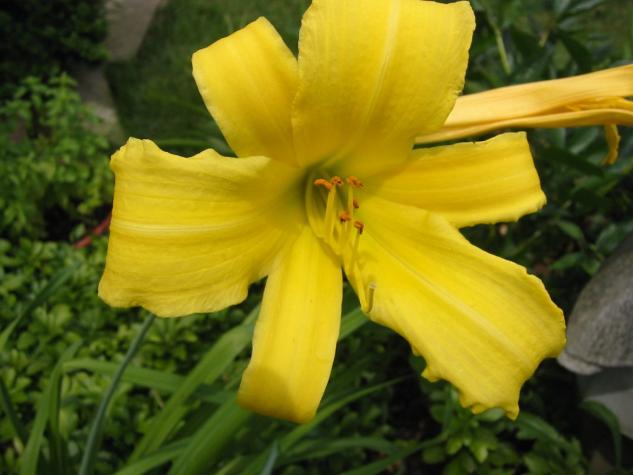COLUMBIA, Mo. – Few garden flowers give more and ask for less than daylily. In the quest for a “no maintenance” perennial, daylily is about as close as one can get, said University of Missouri Extension horticulturist David Trinklein. There are some who maintain that daylilies thrive on neglect, he added.
With their ease of care and the myriad flower colors, types and sizes available, it is little wonder why daylily is America’s most popular perennial flowering plant, said Trinklein.
Daylily belongs to the genus Hemerocallis, a name derived from the Greek words hemera (day) and kalos (beautiful). It makes reference to the fact that the showy flowers of this plant rarely last for more than 24 hours.
Daylily is thought to be native to China, Japan and Korea. A written record dating back to 2697 B.C. indicates Chinese used it as food and for its perceived medicinal properties. It is mentioned in several 16th-century European herbals under a variety of names no longer used today.
By the late 1800s, many daylily species had found their way into American gardens. But it was the work of plant breeder Arlow B. Stout that started daylily on the path to the popularity it enjoys today. Stout received plants and seeds from China in 1924 and began a program of breeding and improvement.
His work inspired professional and amateur plant breeders to hybridize daylily. Their efforts resulted in an astonishing 83,955 daylily cultivars registered by the American Hemerocallis Society, according to its 2017 database.
Such a multitude of cultivars requires a sizable glossary to describe daylily flowers and distinguish one cultivar from another. Terms such as single, double, spider, circular, flat, informal, triangular, star and recurved are a few of the many terms used to describe flower form. Flower color and/or pattern are described by terms such as self, blend, polychrome, bi-tone, bicolour, watermark and eye zone.
An extensive list of terms associated with daylily can be found at Daylily Dictionary.
A sun-loving perennial, daylily needs a minimum of six to eight hours of direct sun daily. However, a bit of late afternoon shade does help to preserve flower color and longevity. In shady exposures, the lily produces abundant foliage but very few flowers.
Daylily prefers a medium-heavy garden loam, although it can tolerate a wide array of soil textures. Soil of any texture can be improved by incorporating liberal amounts of organic matter in the form of well-rotted manure, compost or peat moss before planting, according to Trinklein.
Fertilizer should be applied sparingly; too much nitrogen can be detrimental. “If daylilies produce lush, abundant foliage but few flowers, they probably are receiving too much fertilizer,” Trinklein added. Daylilies growing in fairly rich soils need little if any additional fertilizer.
Although daylily is fairly drought-tolerant, adequate water increases flower number and size. Water is important in the spring when the plants form scapes and set buds and later when plants are in bloom.
Daylily faces attack by a variety of pests and diseases, but most do only minor damage. Aphids, thrips and spider mites are the most common insect pests. Crown and root rot, leaf streak and daylily rust are diseases that can be problematic.
Like most clump-forming perennials, daylilies need periodic division for best garden performance. The frequency of division depends largely on cultivar and growing conditions.
Cultivars known for their reblooming tendency such as Stella de Oro should be divided relatively frequently. This helps to force new growth throughout the growing season, which is the primary factor that causes a daylily to rebloom. Daylilies can be divided or planted any time the ground is not frozen. However, late August through September is considered the most ideal time, Trinklein said.

